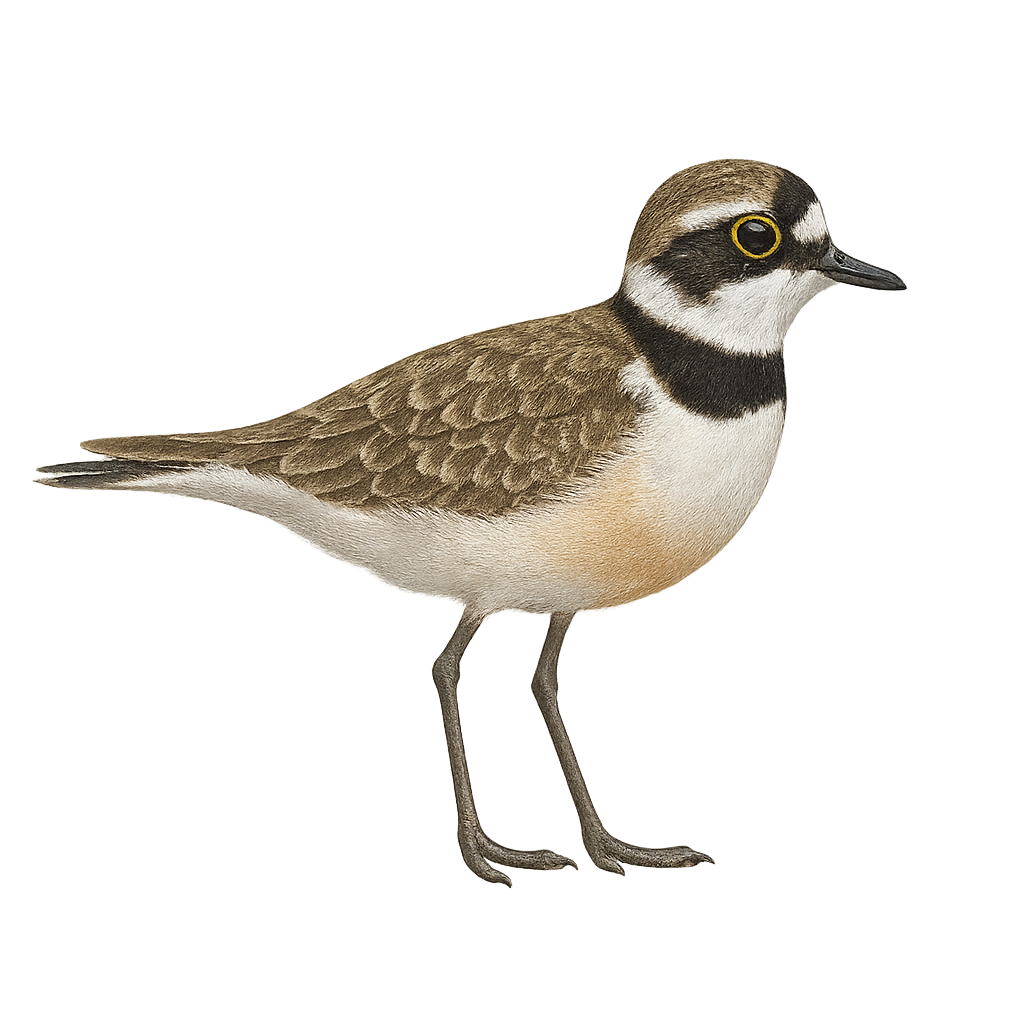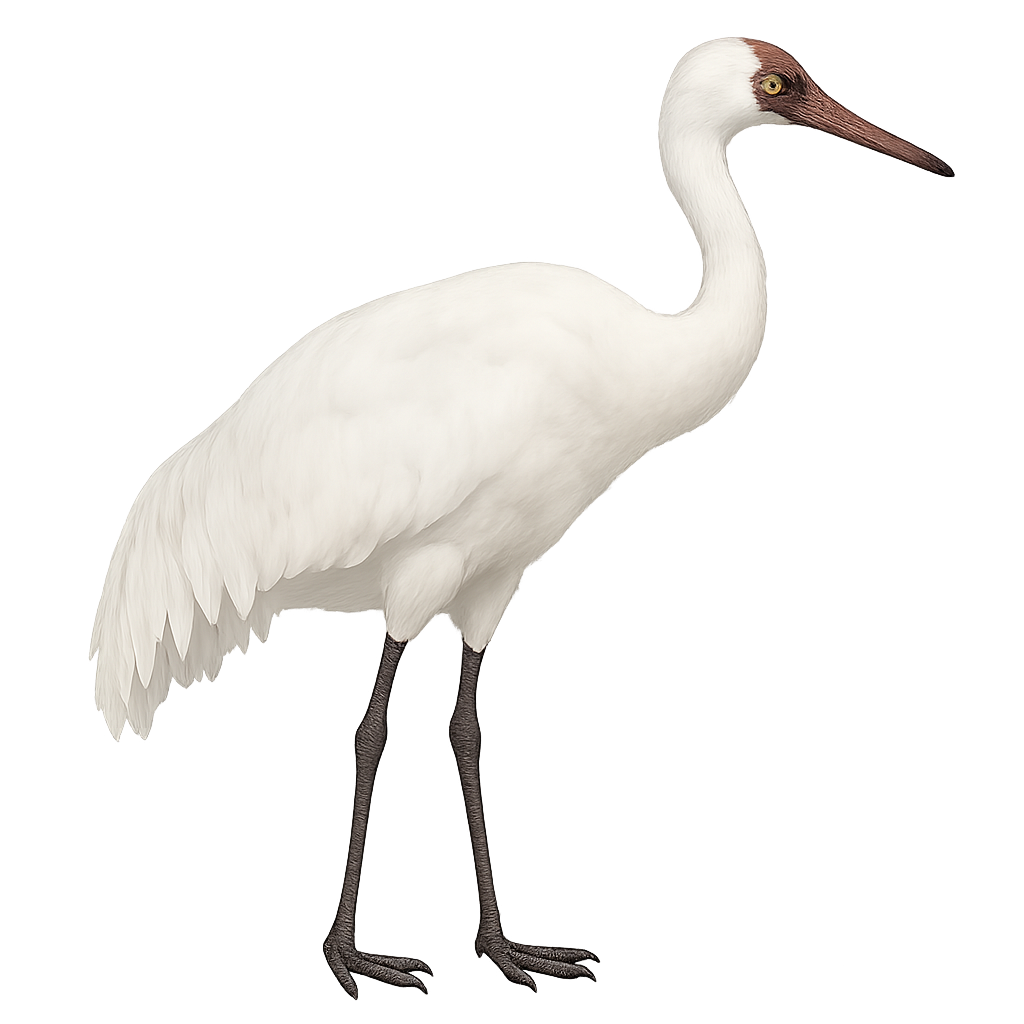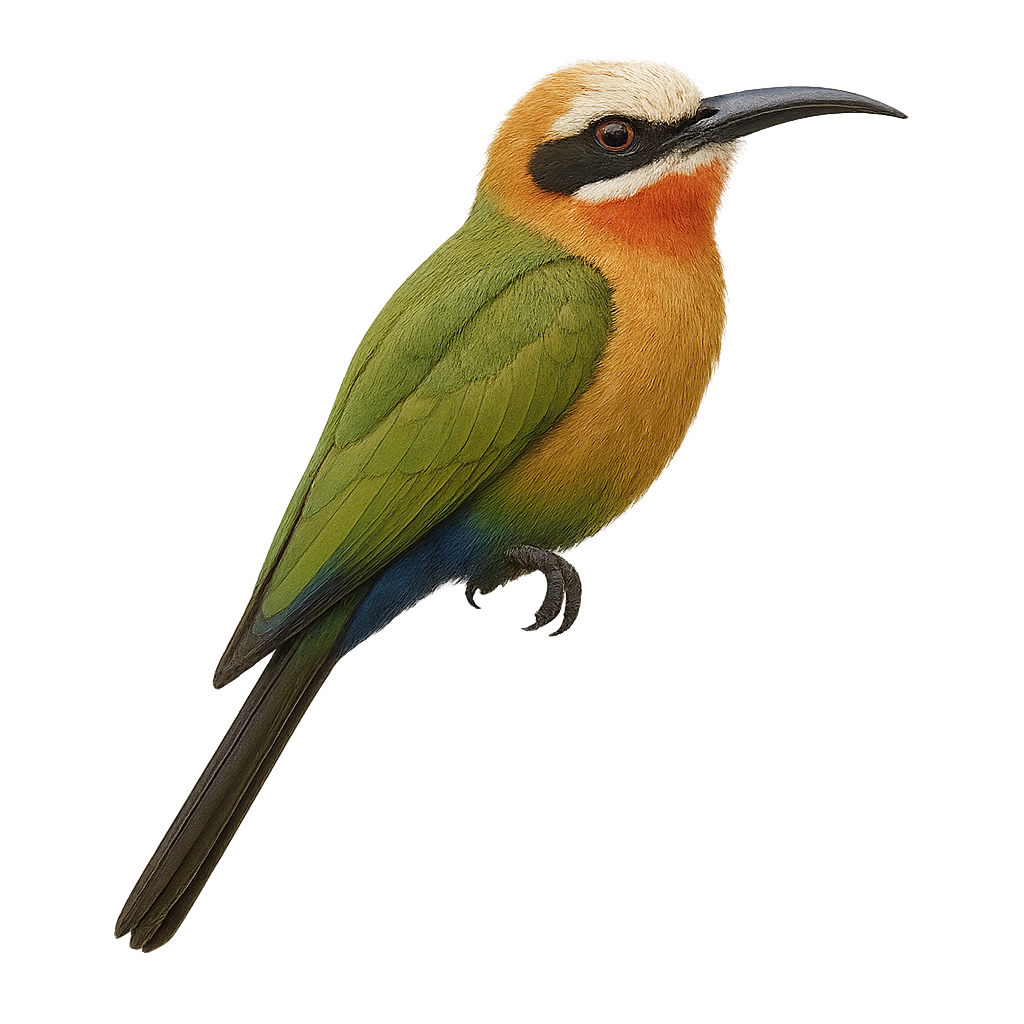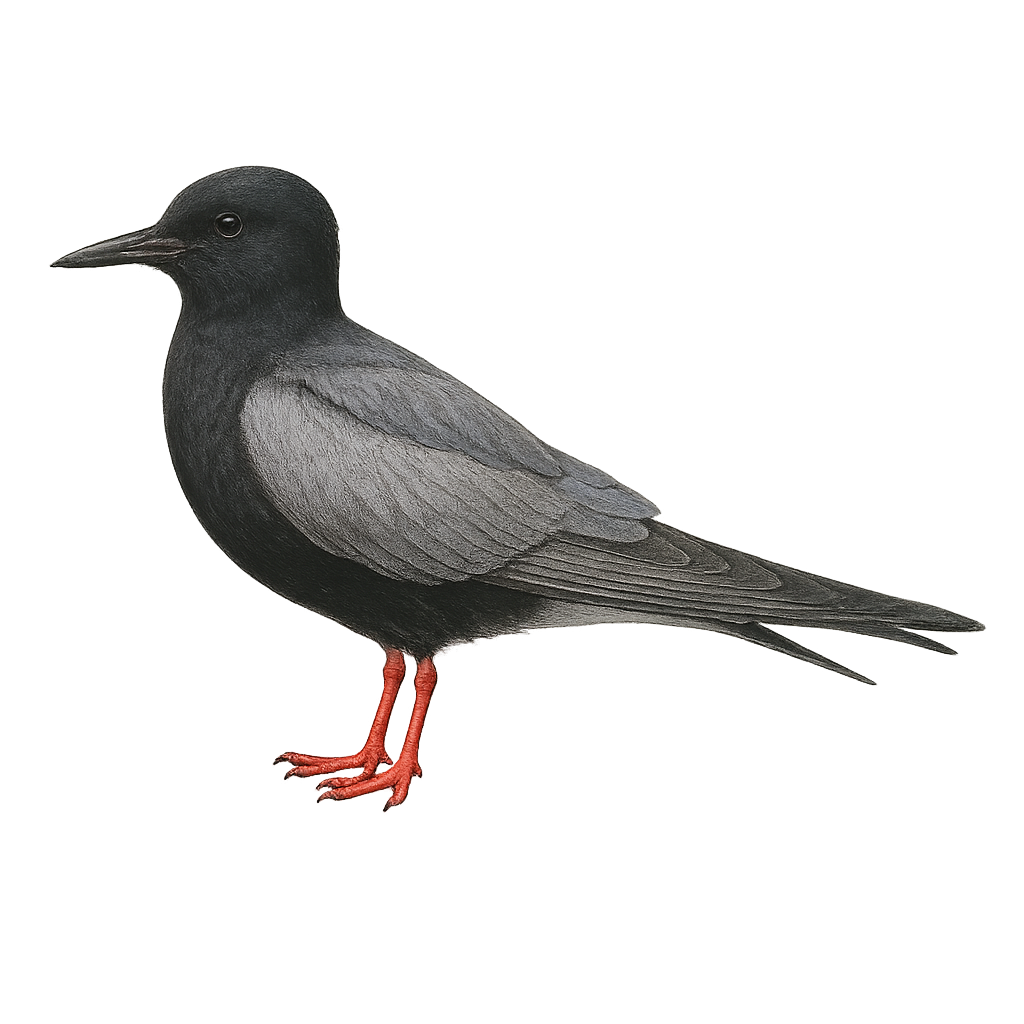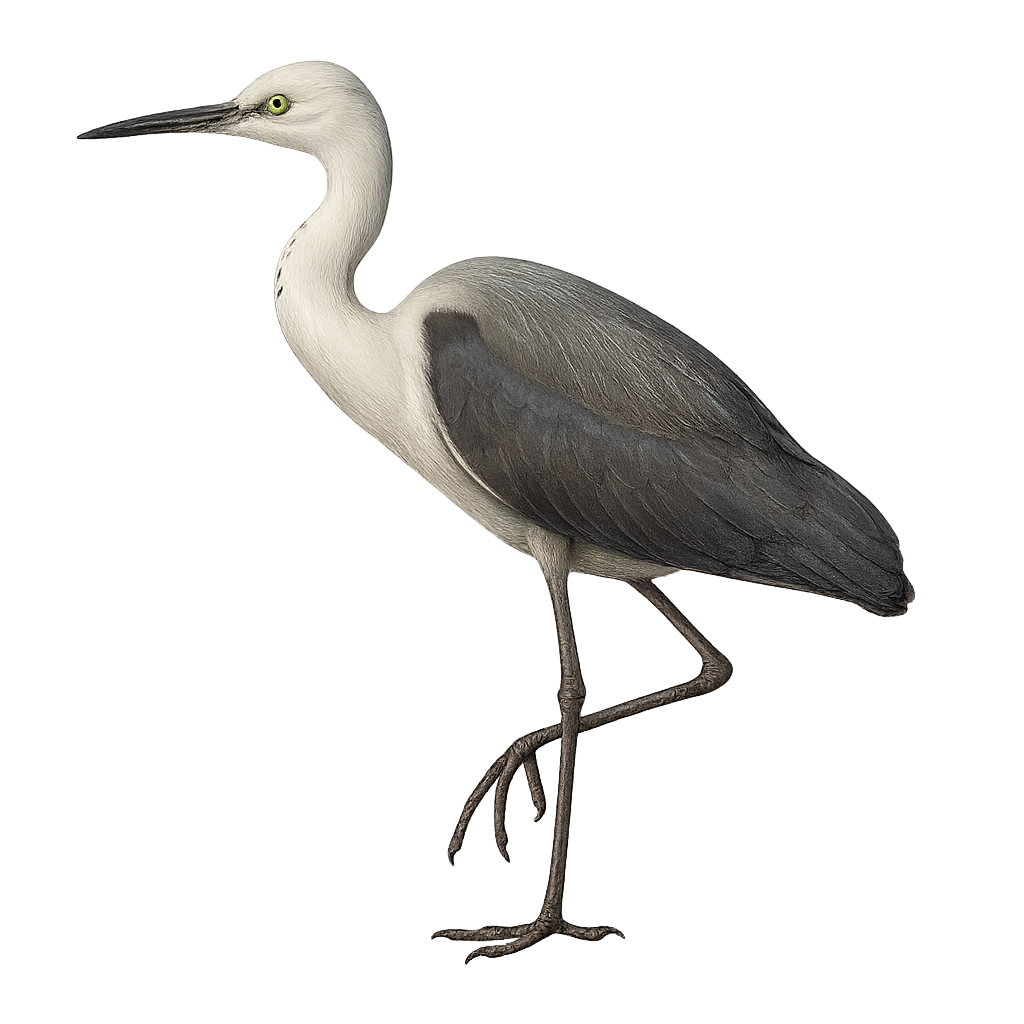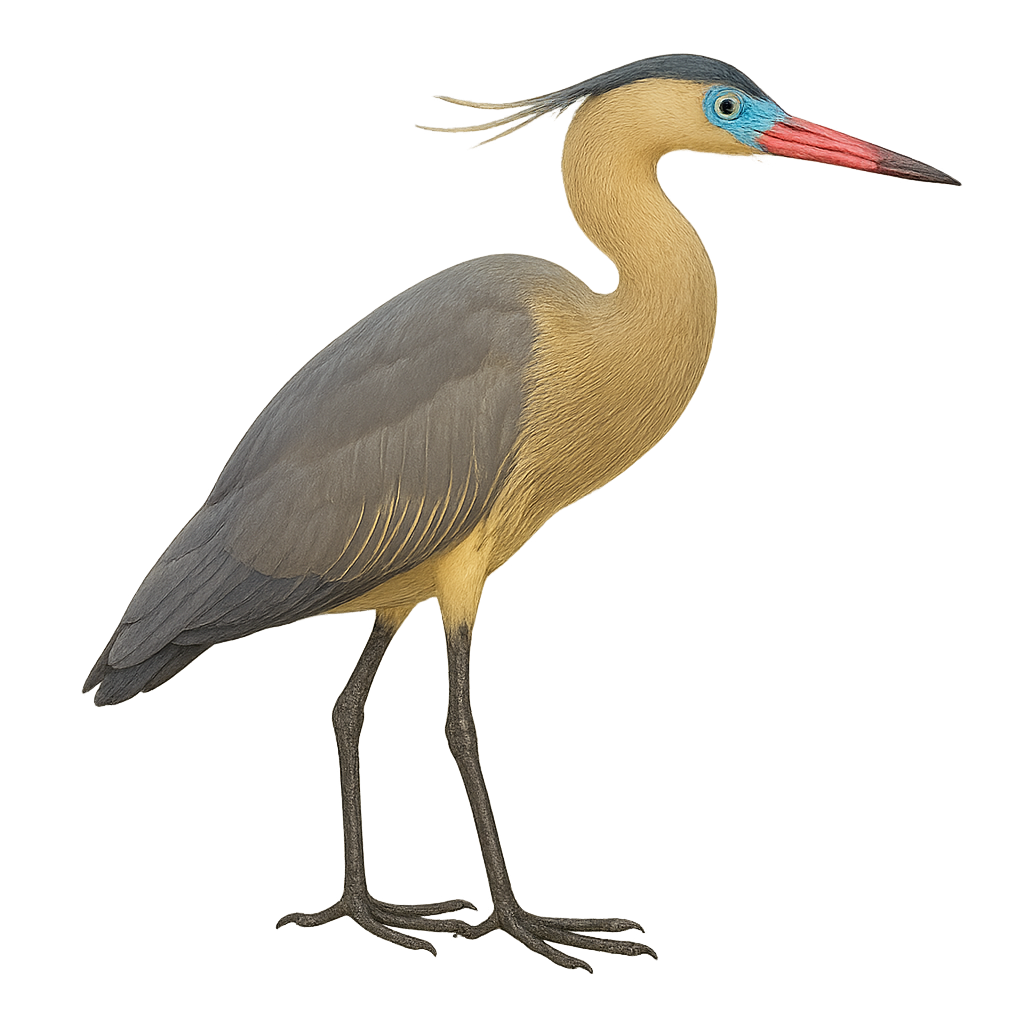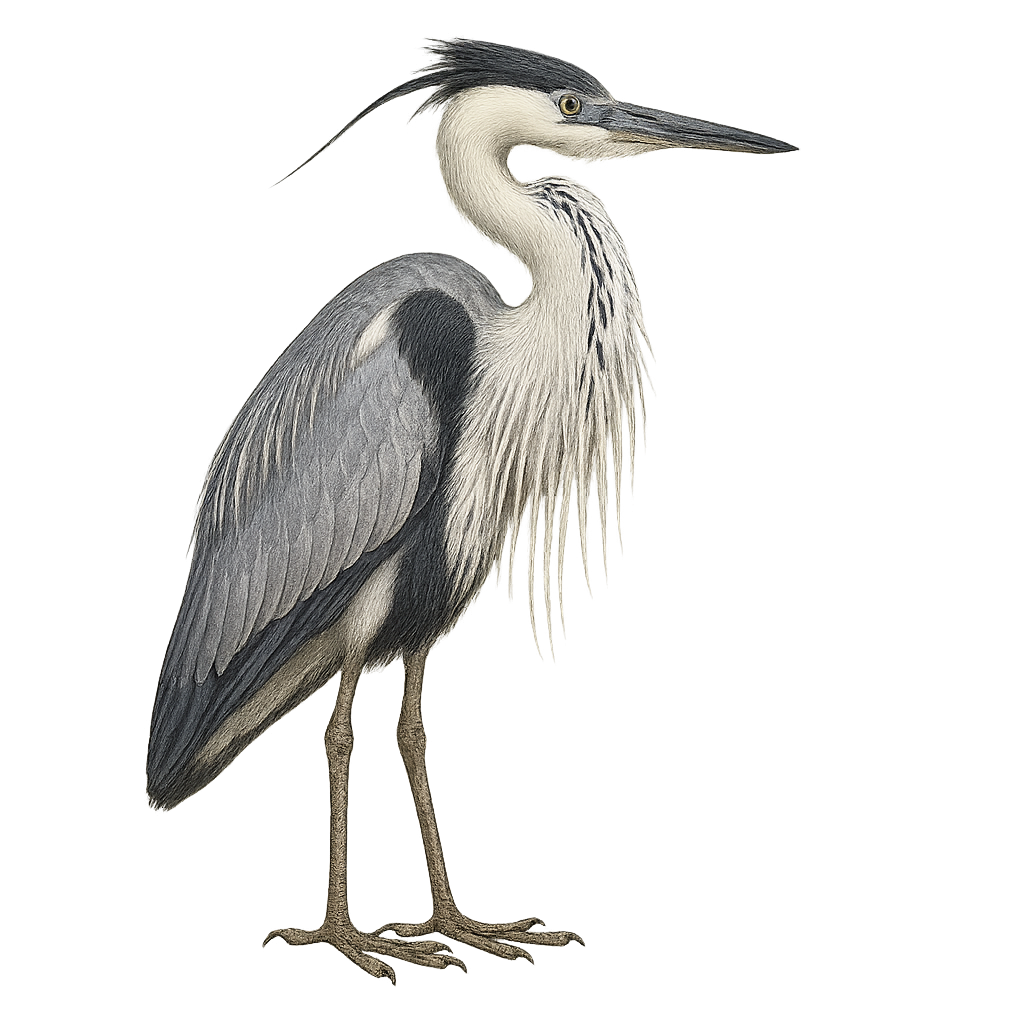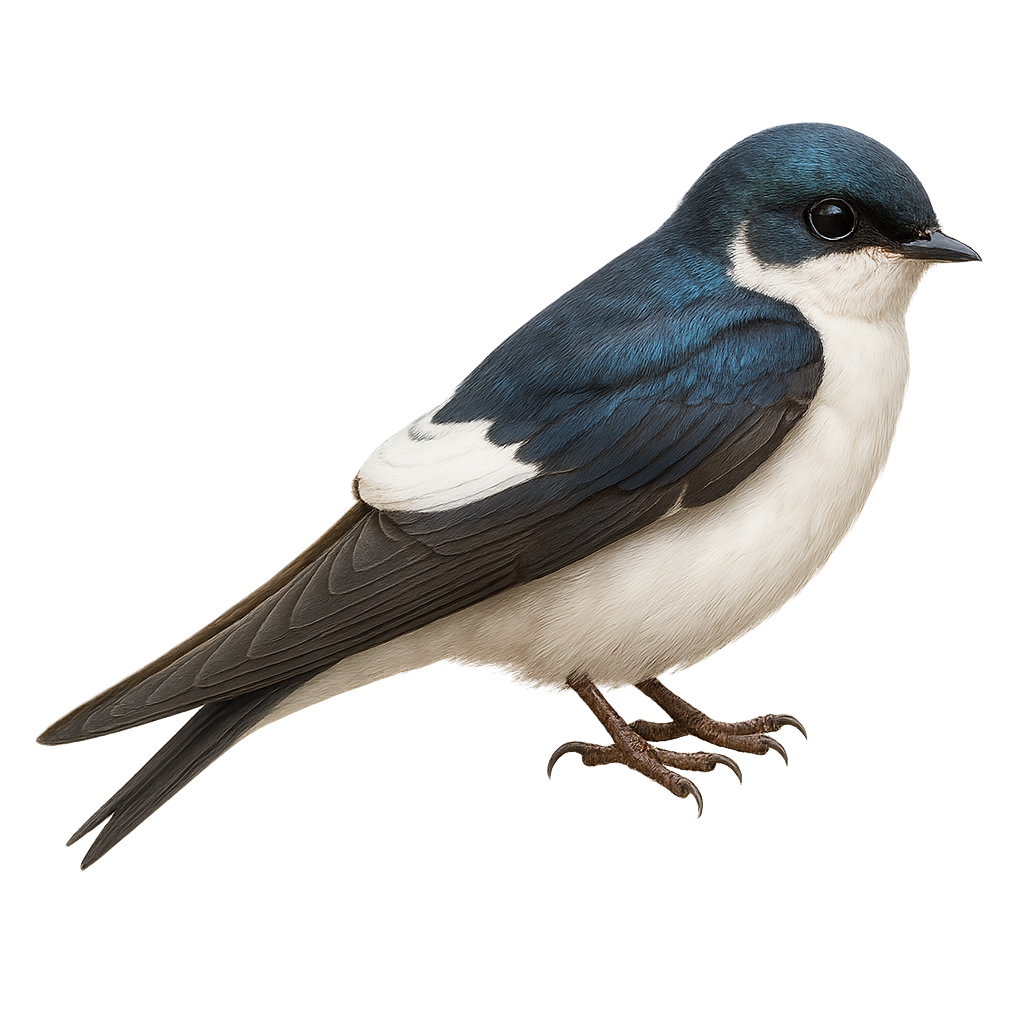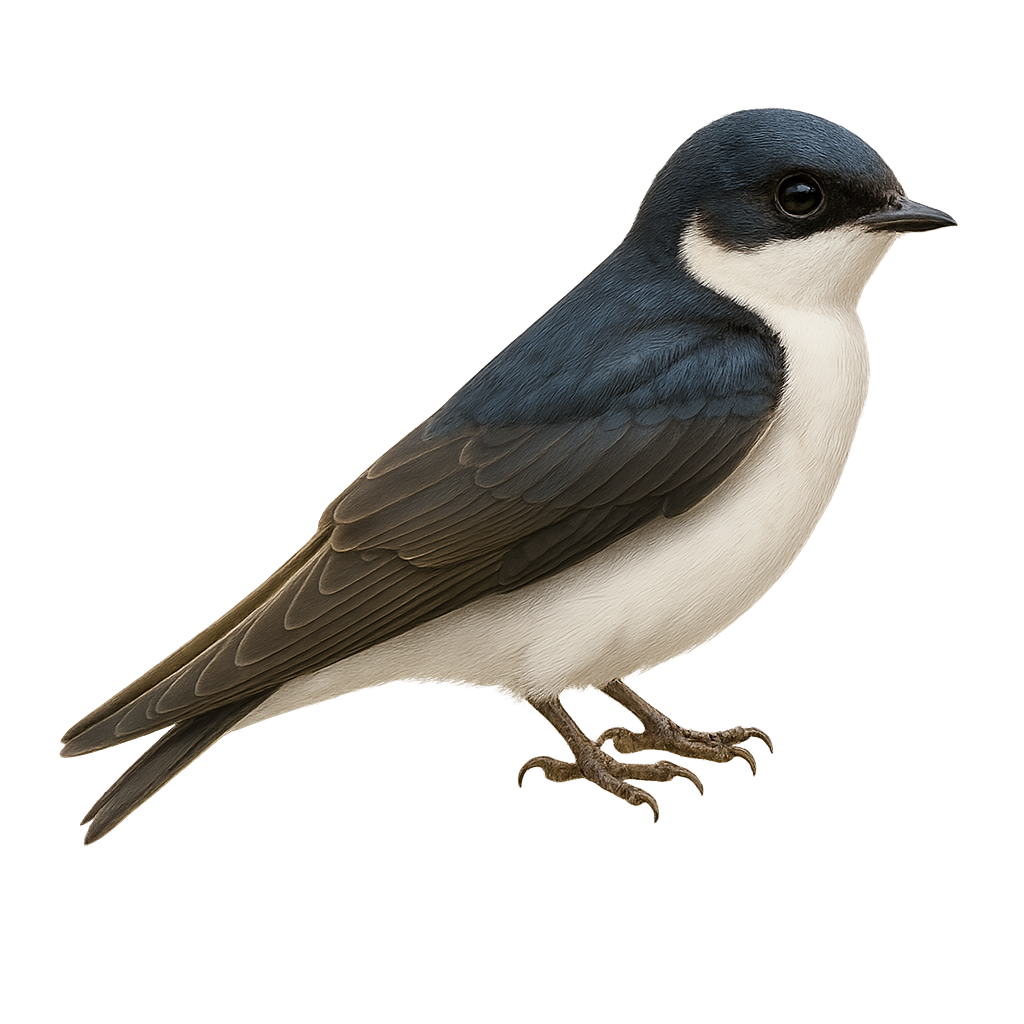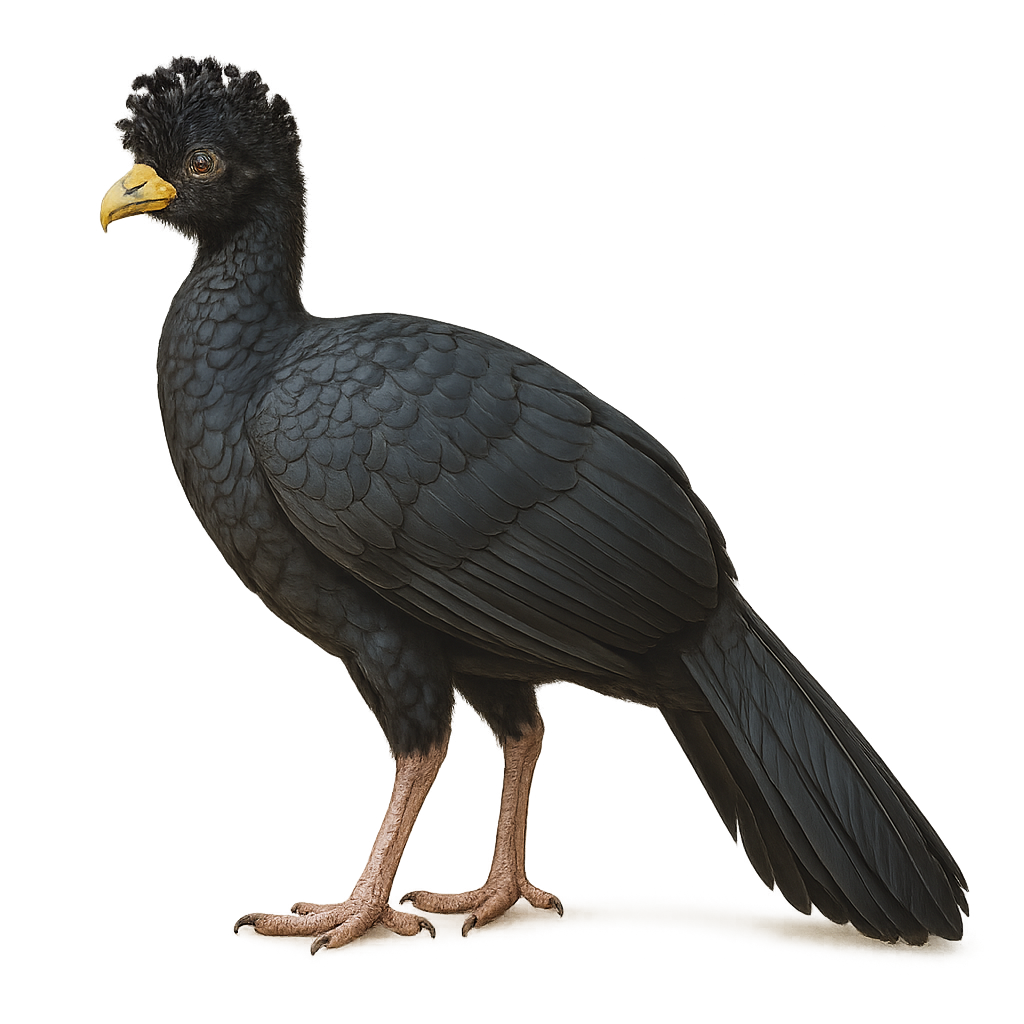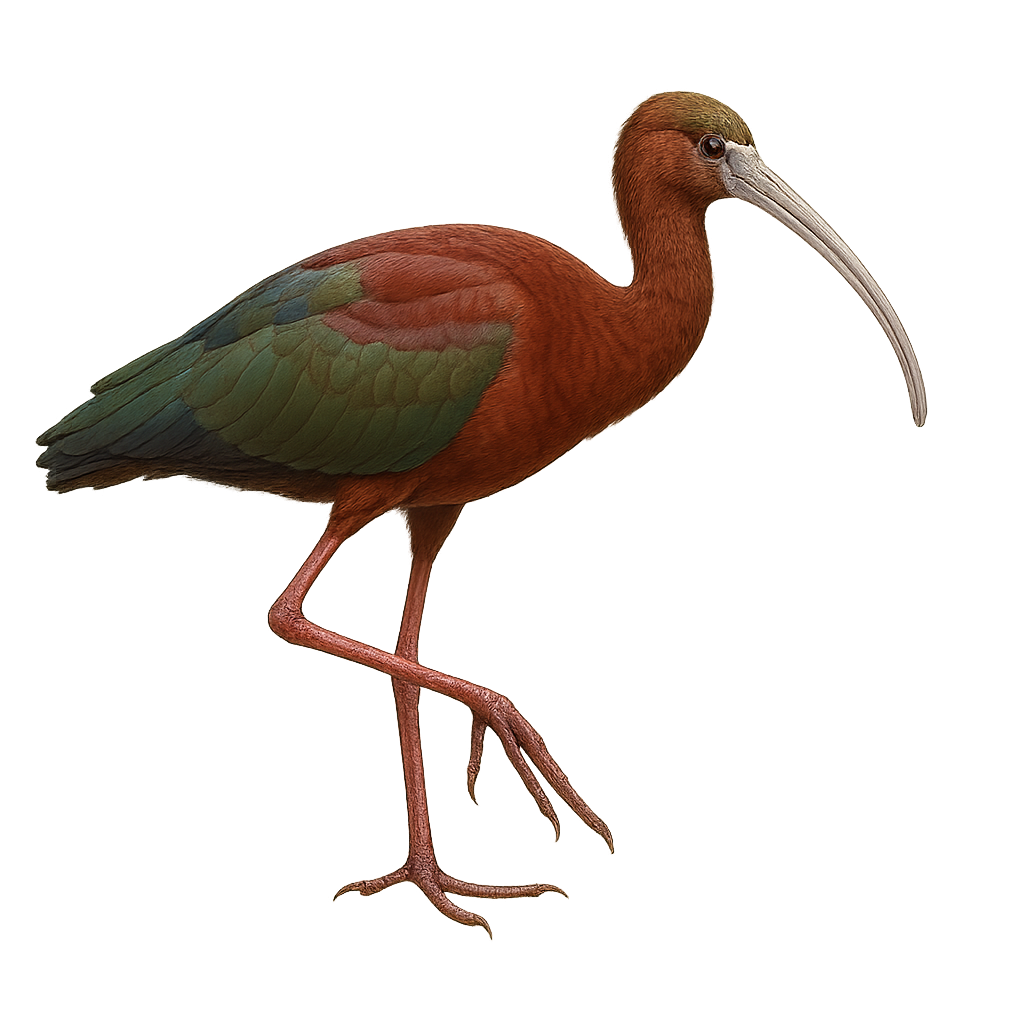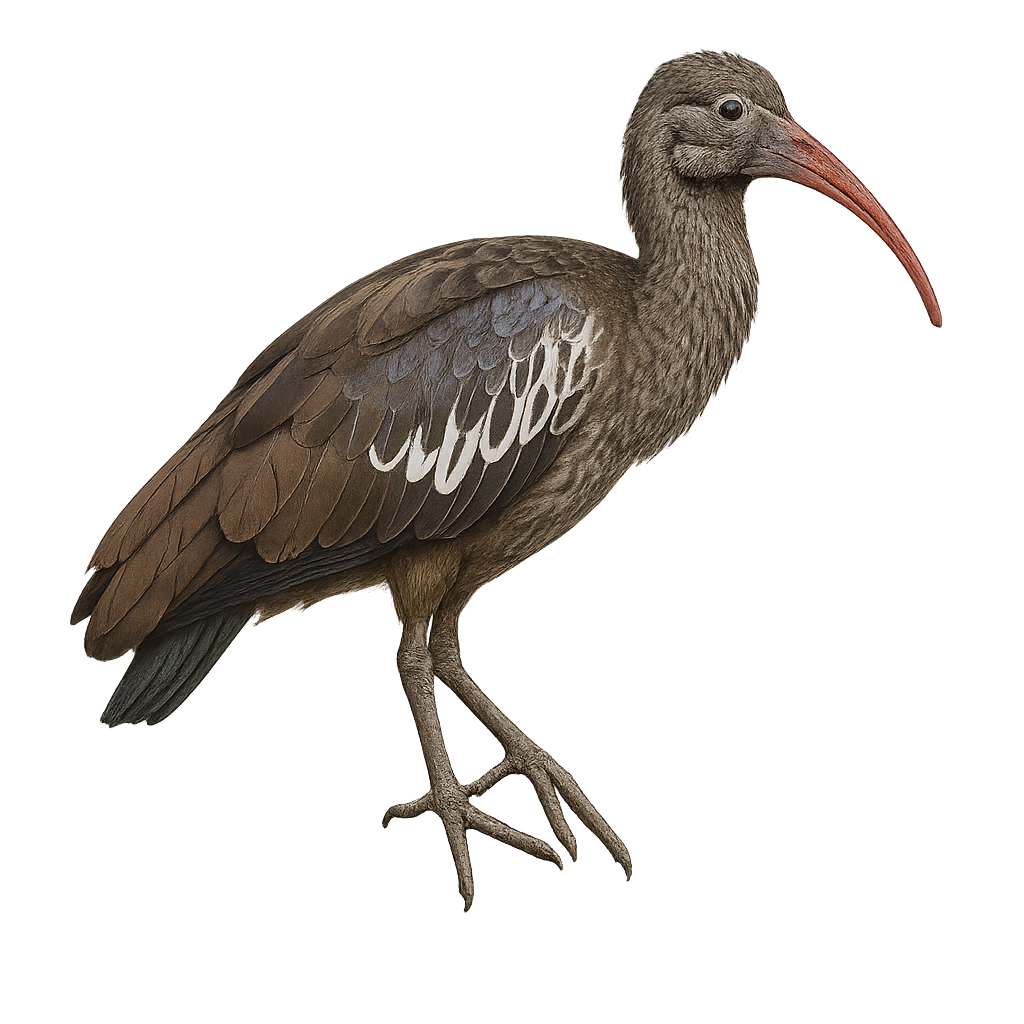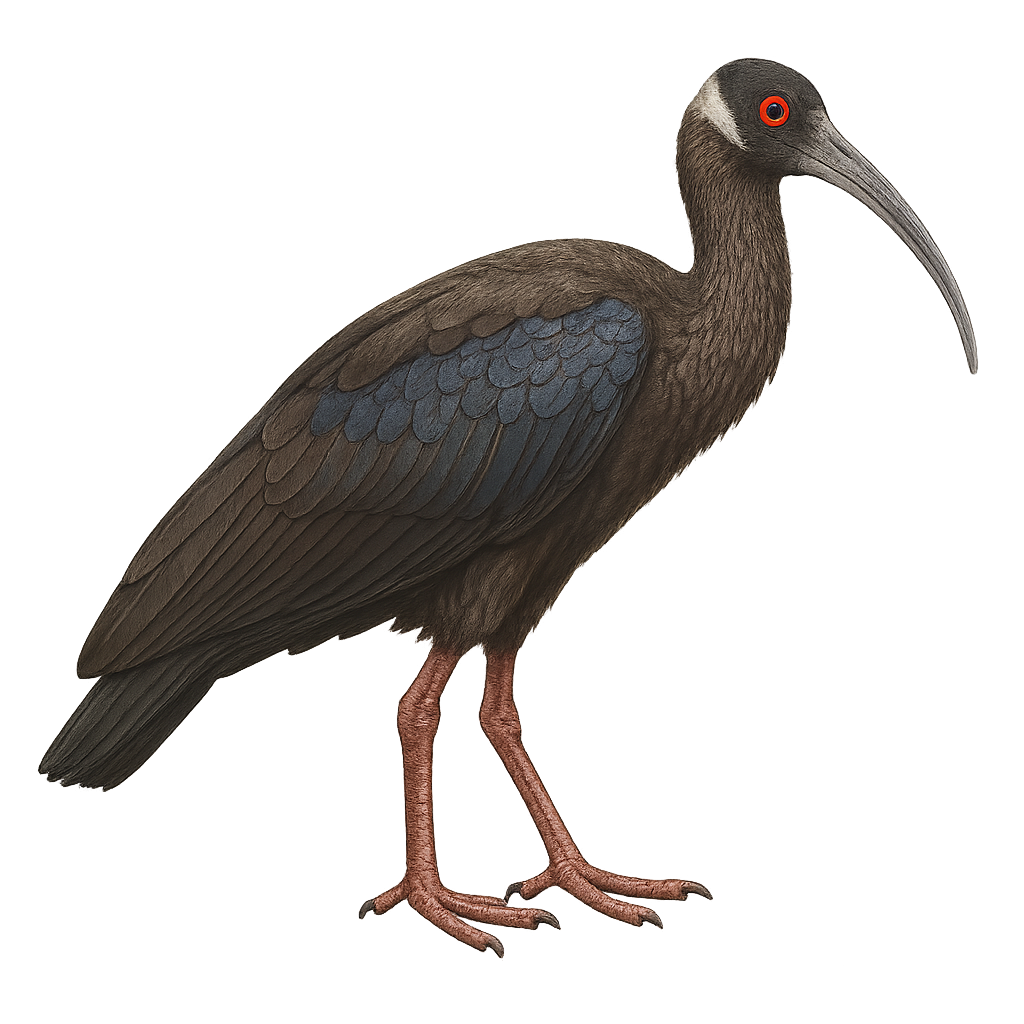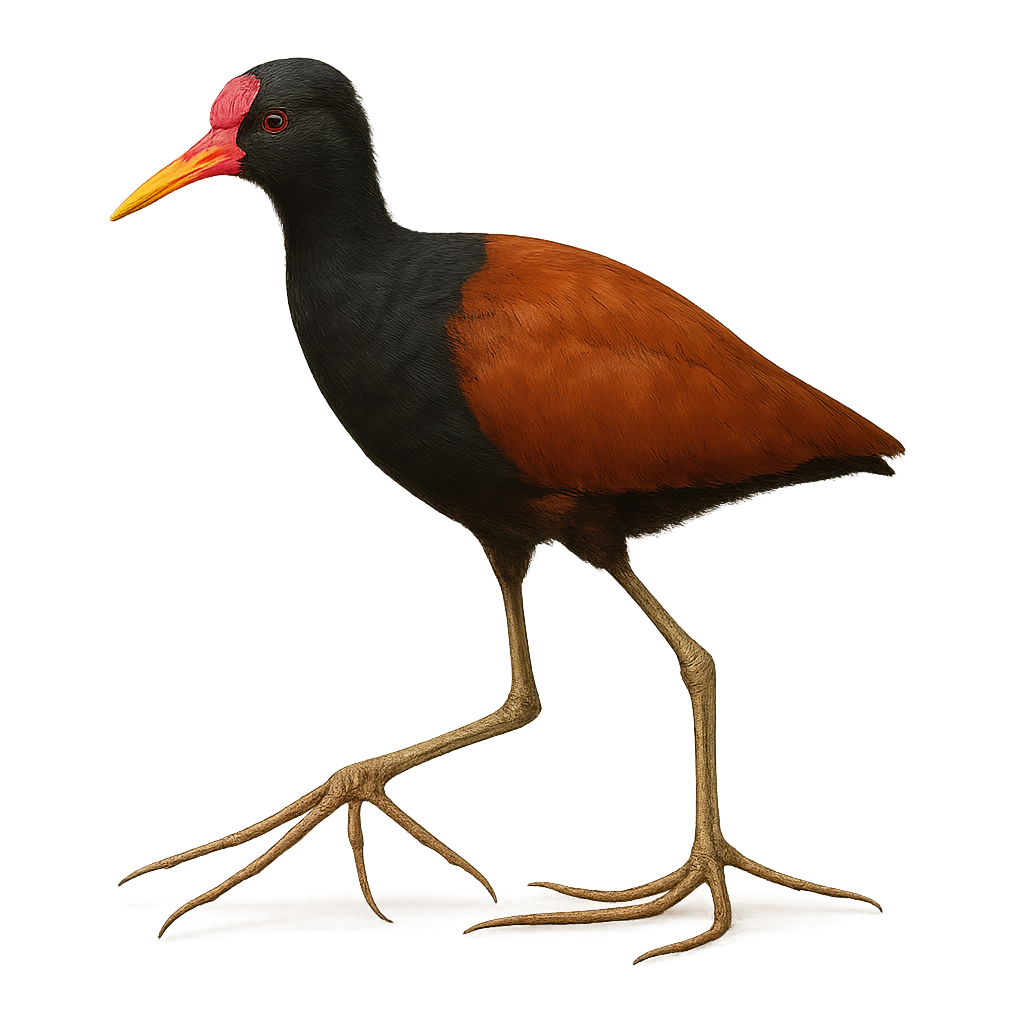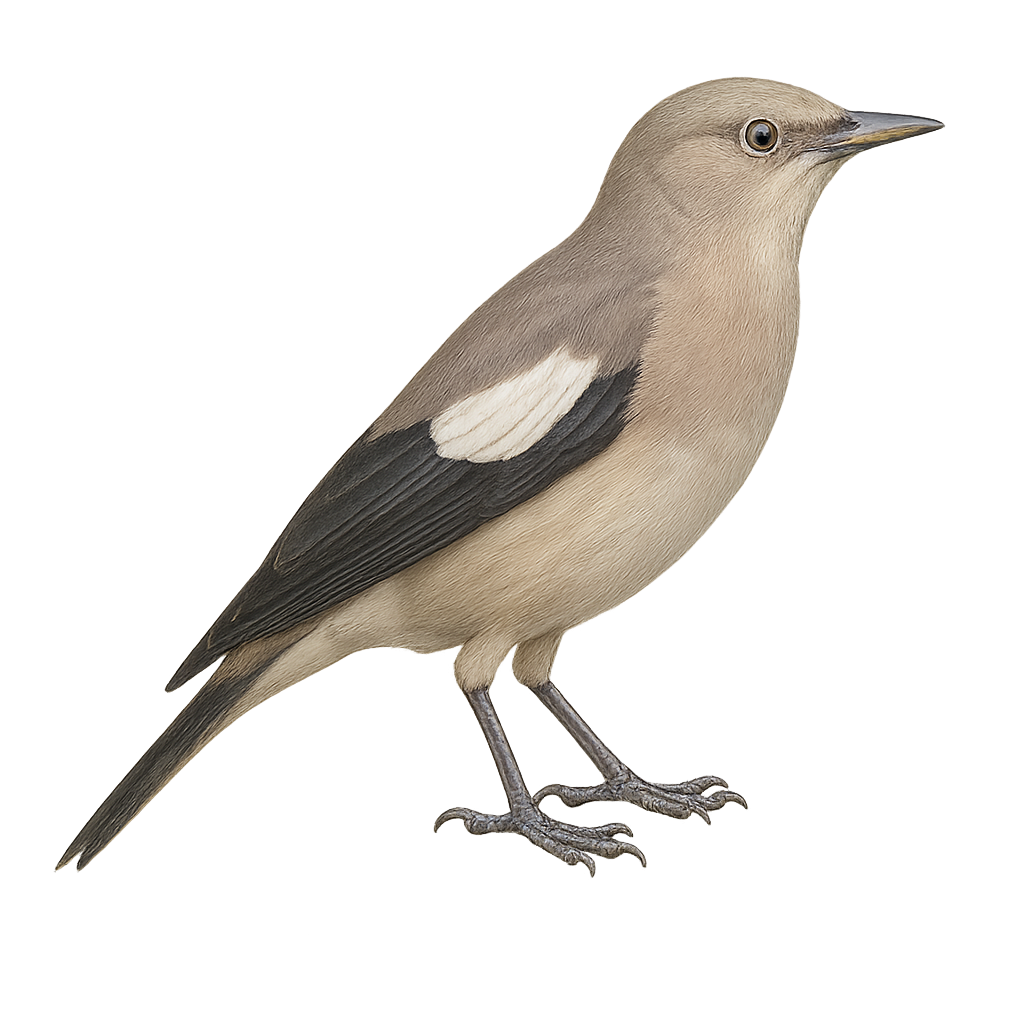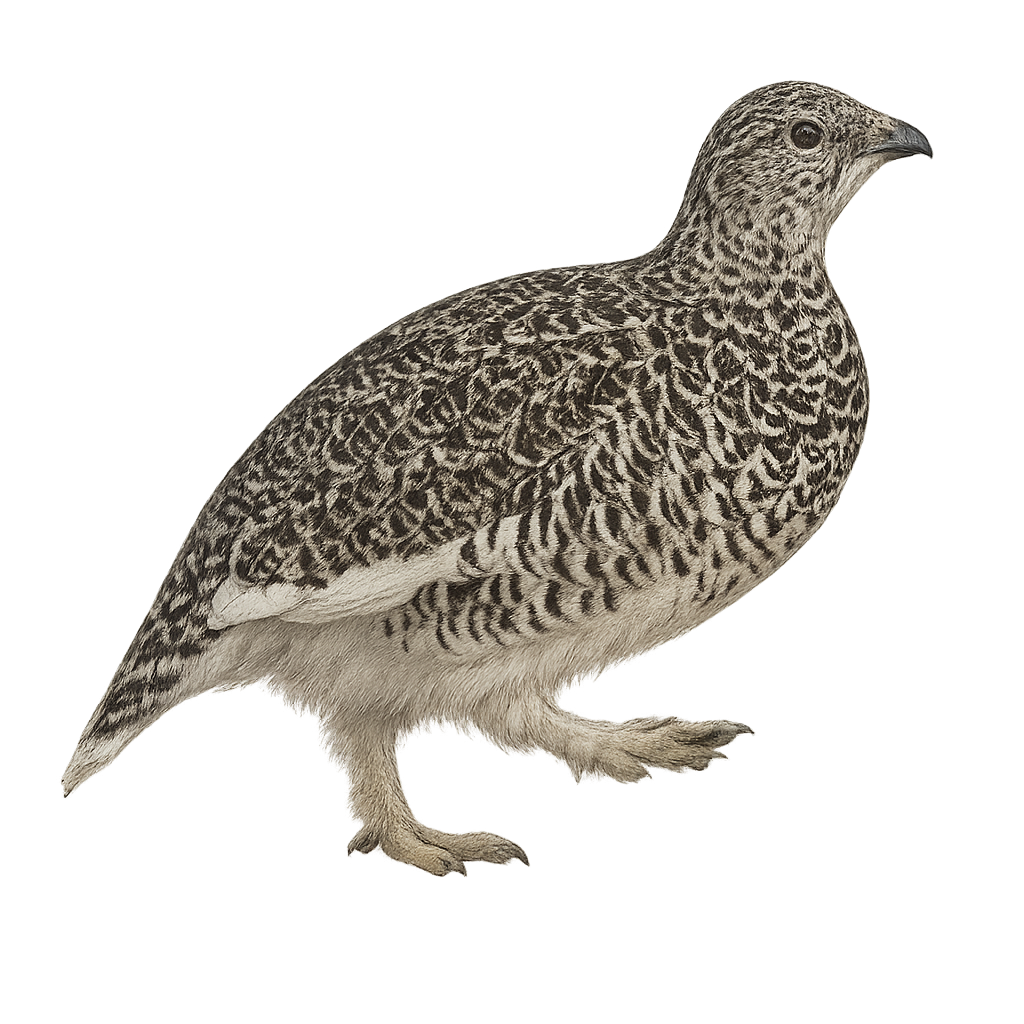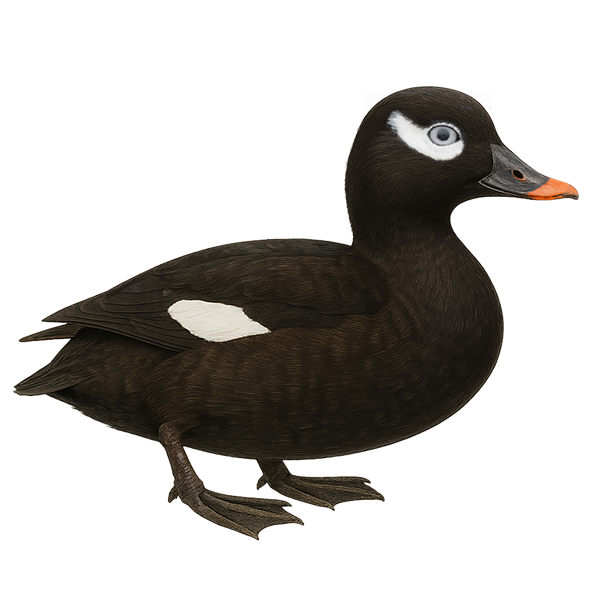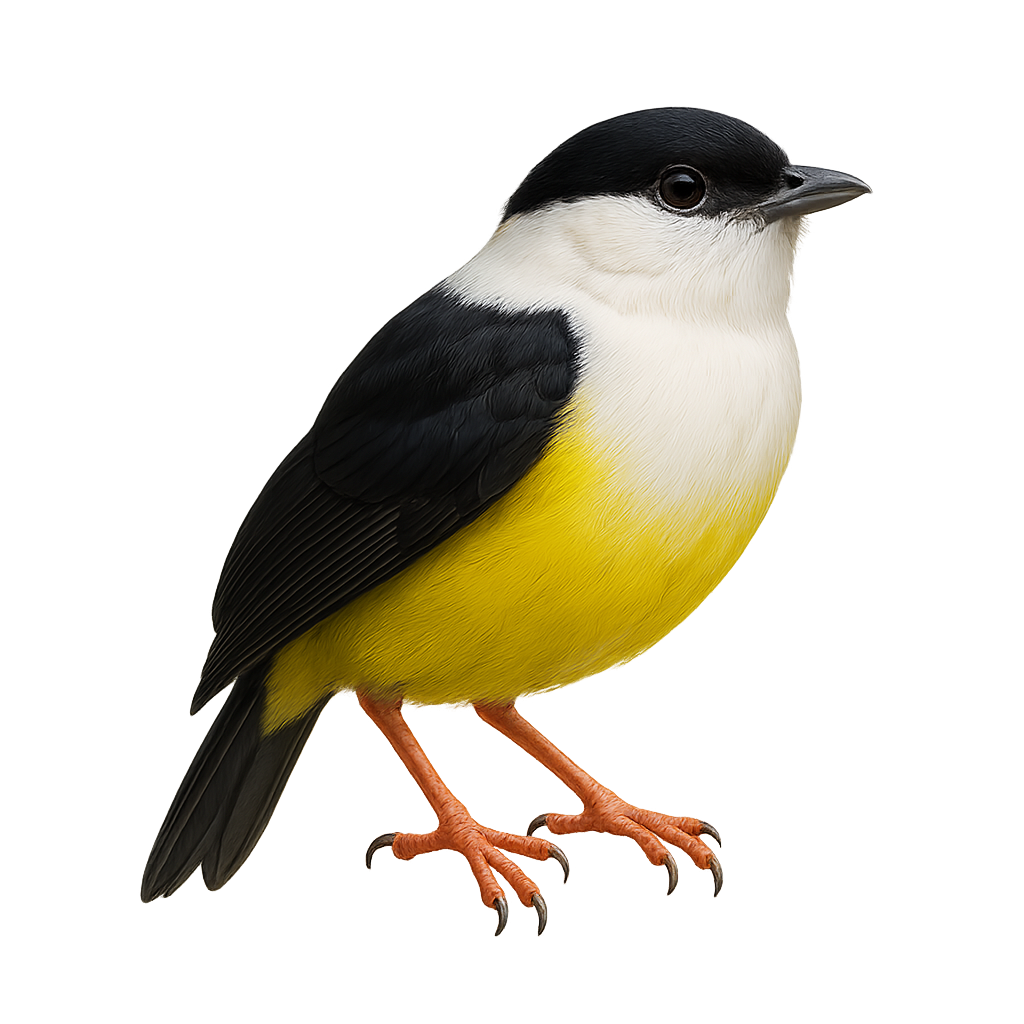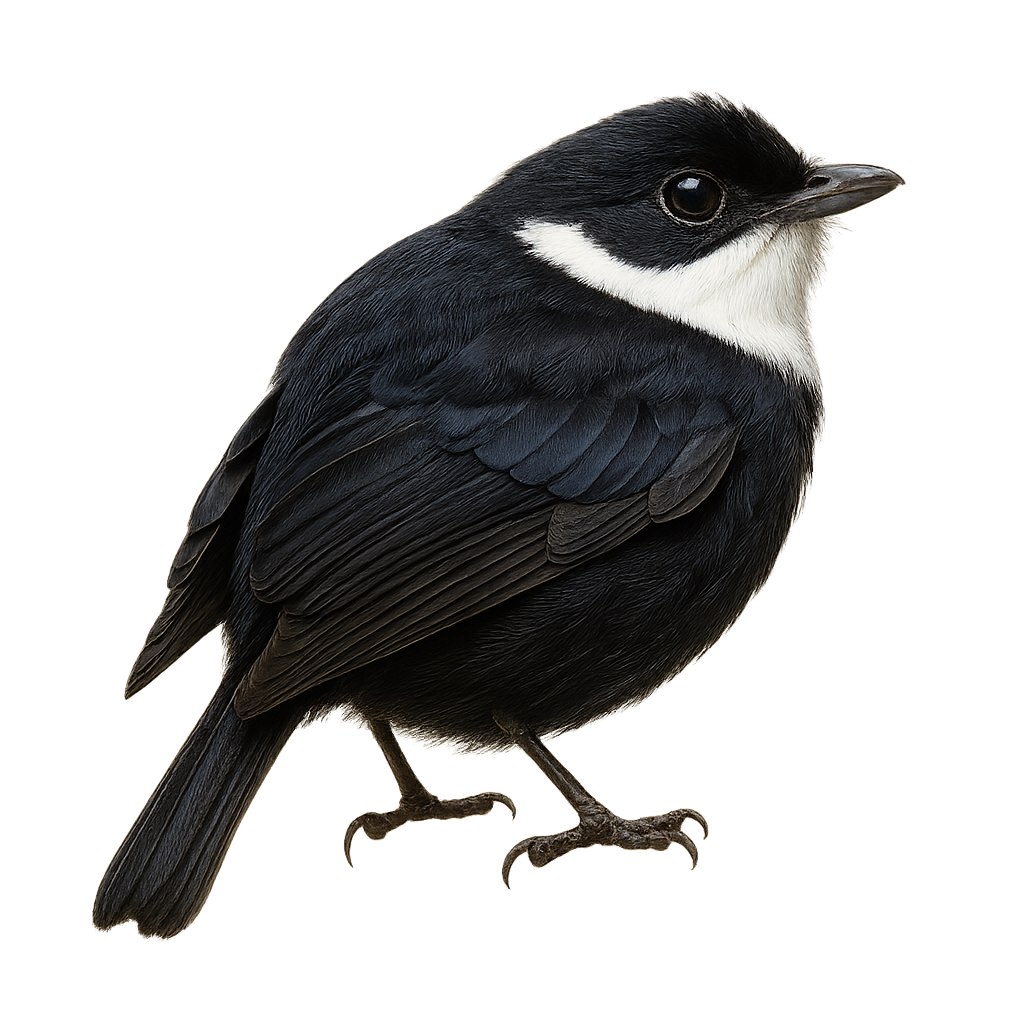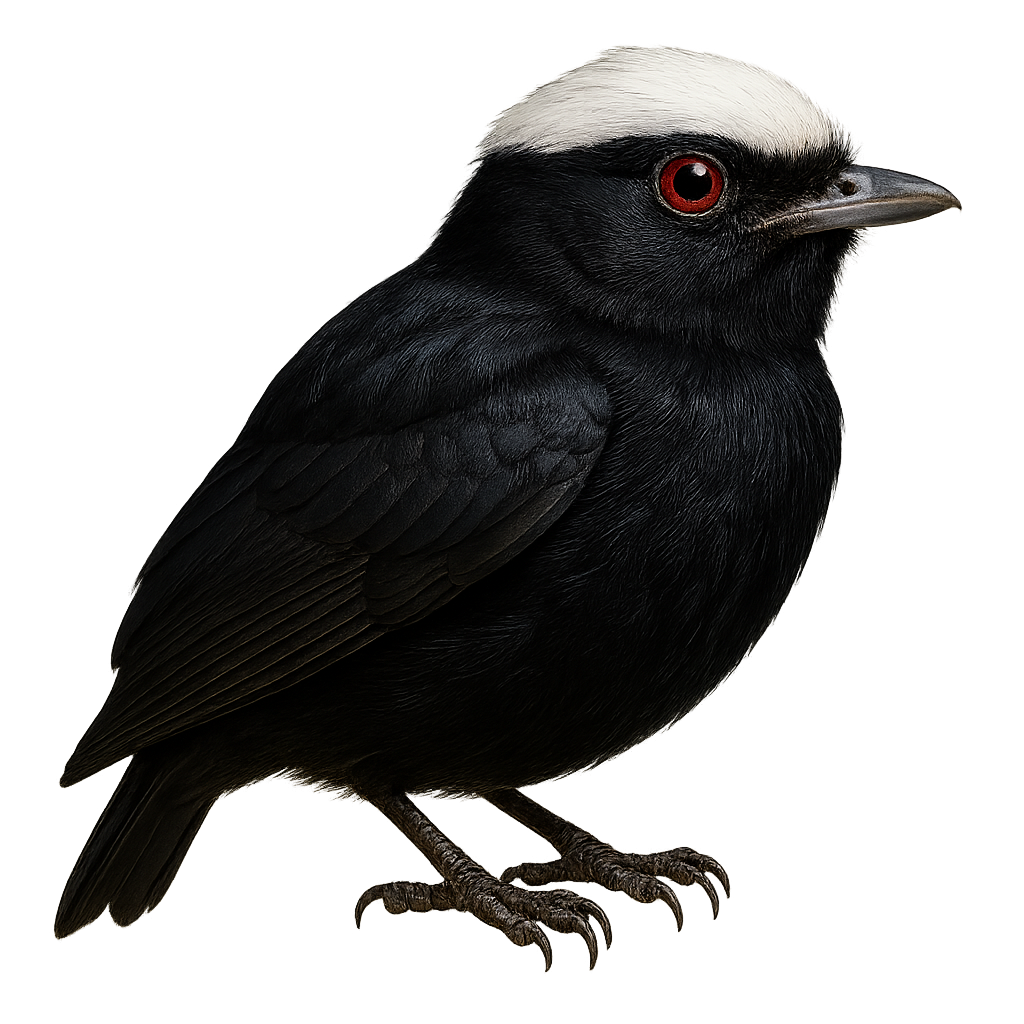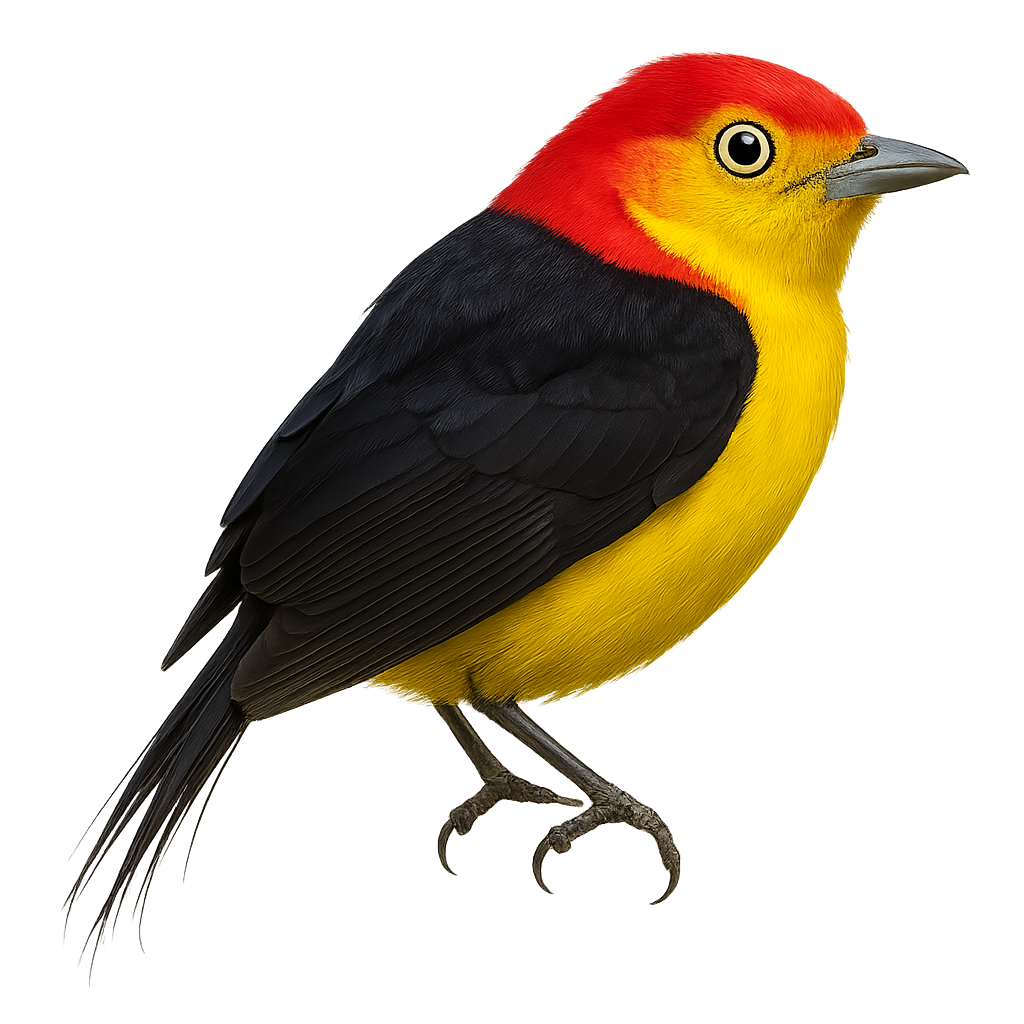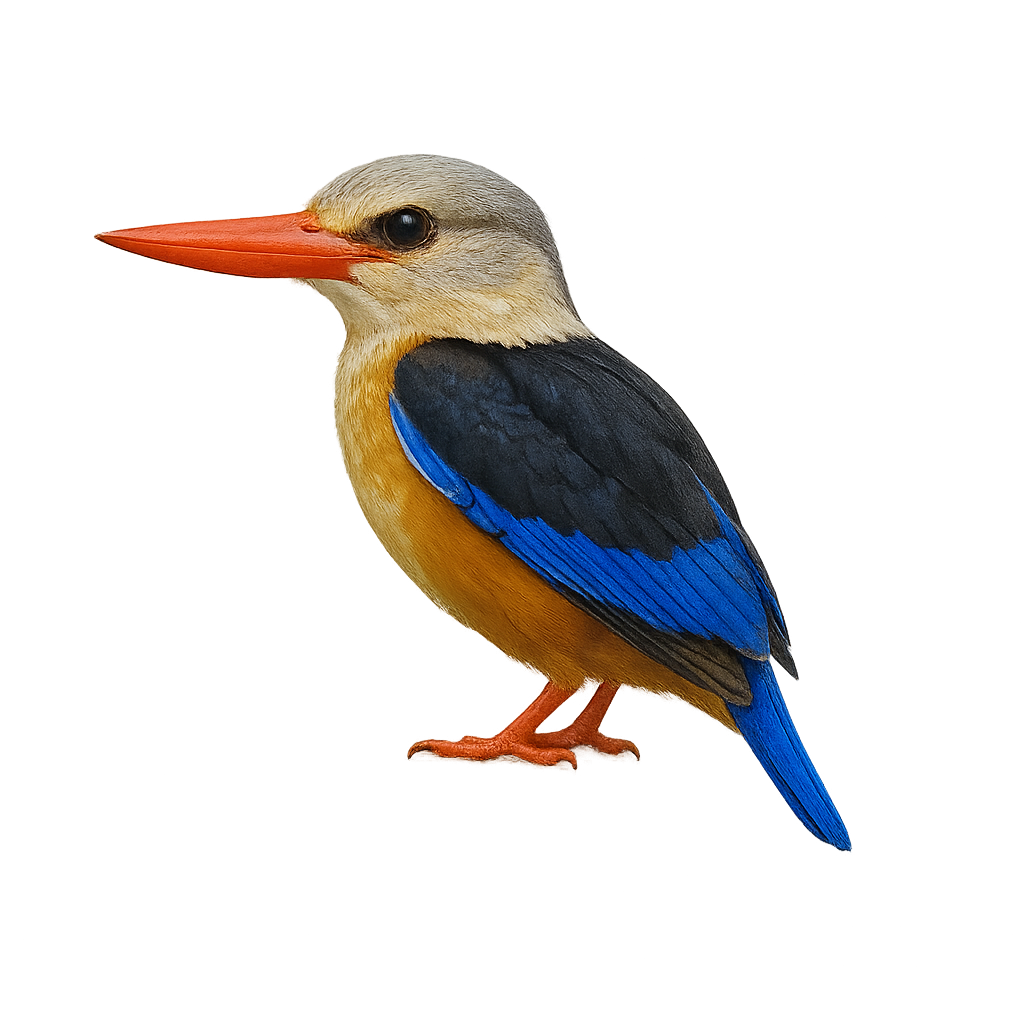The Wrybill, or Anarhynchus thoracicus, is an endemic bird of New Zealand, known for its uniquely right-curved bill. This small wader measures about 20 cm in length and weighs between 40 and 60 grams. Its plumage is mainly grey with a white belly and a distinctive black band across the chest. It frequents rivers and estuaries, feeding primarily on insects and small invertebrates. Its ability to move quickly over pebbles and use its bill to probe under stones is remarkable. Unfortunately, this species is threatened by habitat loss and predation by introduced species.
The Wrybill, Anarhynchus nivosus, is a unique bird species primarily endemic to New Zealand. This small shorebird is easily recognizable by its distinctively right-curved bill, a rare adaptation in the avian world. It mainly inhabits gravel riverbeds and estuaries, where it feeds on invertebrates. Its subtle coloration, with grey and white plumage, allows it to blend into its surroundings, providing protection from predators. The Wrybill is a migratory bird, moving to coastal areas in winter. Although its population is stable, it is considered vulnerable due to habitat loss and human disturbances.
The White-flanked Antwren, Herpsilochmus axillaris, is a small bird belonging to the Thamnophilidae family. It is primarily found in lowland tropical rainforests in South America, particularly in Peru, Colombia, and Ecuador. This bird is characterized by its subtle plumage, with white flanks contrasting against its grey body. Often seen in pairs or small groups, it actively moves through foliage in search of insects. Although it is relatively tolerant, it can be challenging to spot due to its dense habitat. Its presence is an indicator of the health of the forest ecosystems it inhabits.
The Wood Thrush, or Hylocichla mustelina, is a medium-sized bird known for its reddish-brown back and white belly speckled with black. It is often found in deciduous forests of North America, feeding mainly on insects and fruits. Its melodious song is highly appreciated and adds to the woodland symphony. The Wood Thrush is migratory, spending winters in Central America. It is known for its ability to navigate long distances using geographical and magnetic cues. Although its habitat is threatened by deforestation, it remains relatively common.
The Whooping Crane, or Grus americana, is a majestic and rare bird known for its large size and striking white plumage. It is characterized by its long legs and slender neck, as well as a distinctive red patch on the top of its head. This migratory bird travels long distances between its breeding grounds in northern Canada and its wintering areas in the southern United States. The Whooping Crane is a symbol of conservation, having been saved from extinction through intensive protection and captive breeding efforts. It primarily inhabits wetlands, where it feeds on small aquatic animals and vegetation.
The White-fronted Bee-eater, Merops bullockoides, is a colorful and fascinating bird, recognizable by its vibrant plumage and social behavior. It features a green head with a distinctive white forehead, a red throat, and a yellow belly. Its wings are bright green, while its tail is bluish with elongated central feathers. This bee-eater is often seen in groups, nesting in colonies along sandy riverbanks. It primarily feeds on flying insects, especially bees and wasps, which it catches in flight with agile aerial maneuvers. The White-fronted Bee-eater is a diurnal bird, active mainly during the day, and is known for its melodious calls and graceful flight.
The White-throated Bee-eater is a colorful and elegant bird belonging to the Meropidae family. It is distinguished by its bright plumage, with a white throat contrasting with shades of green, blue, and black. This migratory bird is mainly observed in sub-Saharan Africa, where it frequents savannas, open forests, and wooded areas. It primarily feeds on flying insects, especially bees and wasps, which it catches in mid-air thanks to its remarkable aerial skills. The White-throated Bee-eater is a sociable bird, often seen in groups, and it nests in burrows dug into sandy banks. Its breeding season generally coincides with the rainy season when food availability is optimal.
The White-winged Tern, Chlidonias leucopterus, is an elegant bird from the Laridae family, recognizable by its white wings contrasting with its black body during the breeding season. It primarily inhabits wetlands, marshes, and lakes, where it feeds on insects and small fish. This migratory bird is found in Eastern Europe and Asia during the breeding season, before migrating to Africa and South Asia for the winter. Its population is generally stable, although threats such as habitat destruction and pollution can affect it locally. The White-winged Tern is a fascinating bird to observe, especially during its aerial acrobatics over water bodies.
The White-faced Heron is a graceful and slender bird, identifiable by its bluish-grey plumage and distinctive white face. It is common in Australia, New Zealand, and parts of Southeast Asia. This heron frequents a variety of wetland habitats, including marshes, rivers, and coasts. It primarily feeds on fish, aquatic insects, and small crustaceans. Its flight is graceful, with slow and steady wing beats. The White-faced Heron is often seen alone or in small groups and is known for its ability to remain still for long periods while waiting for prey.
The Whistling Heron, Syrigma sibilatrix, is an elegant and distinctive bird, recognizable by its pastel-colored plumage and long, graceful neck. It features a blue-gray head with a black crown, while its body displays shades of beige and pink. This heron is often found in wetlands, marshes, and flooded grasslands of South America, where it primarily feeds on small fish, insects, and crustaceans. Its name comes from its characteristic call, a melodious whistle that echoes through its natural habitat. Although generally solitary, it can be seen in small groups during the breeding season.
The White-bellied Heron, Ardea insignis, is a rare and majestic bird primarily found in the Himalayan regions. It is distinguished by its grey-blue plumage and white belly, contrasting with its long neck and slender legs. Standing up to 127 cm tall, it is one of the largest herons in the world. Preferring high-altitude rivers and lakes, it is often solitary and discreet, making it difficult to observe. Its population is declining, mainly due to habitat loss and human disturbance. Conservation efforts are crucial to ensure its survival, as it is classified as critically endangered by the IUCN.
The White-winged Swallow, Tachycineta albiventer, is a passerine bird species in the Hirundinidae family. It is easily identified by its striking plumage, featuring a metallic blue-green back and a bright white belly. This swallow is commonly found near water bodies such as rivers, lakes, and marshes in South America, where it feeds primarily on flying insects. Known for its agile and swift flight, it often moves in small groups. Although its habitat is relatively stable, it can be impacted by deforestation and water pollution. It typically nests in natural or artificial cavities, like tree holes or human structures.
The White-banded Swallow is a small, elegant bird, easily recognizable by its distinctive black and white plumage. It features a characteristic white band on its wings, contrasting with its black back and white belly. This species is often seen in swift, agile flight over water bodies, where it hunts insects. It is widespread in tropical regions of South America, particularly along rivers and lakes. The White-banded Swallow is a sociable species, often seen in small groups. It builds its nest in natural or artificial cavities, using mud and grass for reinforcement.
The White-rumped Swallow, or Tachycineta leucorrhoa, is an elegant and agile bird, recognizable by its metallic blue back and white belly. It is often seen in swift flight, catching insects in mid-air. This species is widespread in South America, especially in open areas and near water bodies. It typically nests in natural or artificial cavities, such as nest boxes. Pairs are monogamous and jointly raise their young. Although its conservation status is currently stable, habitat loss could pose a future risk.
The Crax globulosa, commonly known as the Wattled Curassow, is an impressive bird from the Cracidae family. It is distinguished by its glossy black plumage and characteristic crest. Males display a bright red wattle on their beak, particularly visible during the breeding season. This bird primarily inhabits the humid tropical forests of South America, especially in the Amazon. It is often seen near watercourses, where it feeds on fruits, seeds, and insects. Unfortunately, the Wattled Curassow is threatened by deforestation and hunting, leading to a significant decline in its population. Its conservation is crucial to preserving the biodiversity of its natural habitat.
The White-faced Ibis is an elegant waterbird, recognizable by its iridescent plumage with metallic hues ranging from green to purple. It has a long, curved bill, perfect for probing mud in search of food. This bird primarily inhabits wetlands, such as marshes and lake edges, where it feeds on small invertebrates and aquatic plants. During the breeding season, it forms noisy colonies and often nests alongside other waterbird species. Although relatively common, it is sensitive to habitat disturbances, particularly the destruction of wetlands.
The Wattled Ibis, Bostrychia carunculata, is a bird endemic to the Ethiopian highlands. It is distinguished by its dark brown plumage, characteristic wattles around the base of its beak, and broad wings. This gregarious bird is often seen in small groups, foraging in wet grasslands and marshes. It primarily feeds on insects, worms, and small invertebrates. The Wattled Ibis is a diurnal bird, active mainly in the morning and late afternoon. Its distinctive call, a harsh croak, often echoes through the mountainous valleys. Although relatively tolerant of human presence, it prefers undisturbed areas for nesting and breeding.
The White-shouldered Ibis, or Pseudibis davisoni, is a large and rare wading bird from Southeast Asia, recognizable by its dark plumage, white neck, and black crown. It also features long legs and a curved bill adapted for foraging in wetlands. It inhabits open forests, flooded grasslands, and rice fields in Myanmar, Cambodia, and southern Laos. This species feeds mainly on insects, frogs, crustaceans, and small reptiles. Usually solitary or seen in small groups, the White-shouldered Ibis is critically endangered due to habitat loss and hunting.
The Wattled Jacana, or Jacana jacana, is a striking water bird known for its long legs and elongated toes, allowing it to walk effortlessly on water lilies and other floating plants. Native to the wetlands of South America, this bird features dark brown to black plumage with wings that have greenish sheen and a bright yellow bill topped with a red wattle. Jacanas are known for their polyandrous behavior, where the female mates with multiple males, each responsible for incubating the eggs. They primarily feed on insects and small invertebrates found on the water's surface. Their call is a sharp, piercing cry, often heard at dawn and dusk.
The White-cheeked Starling, or Sturnus sinensis, is a medium-sized bird belonging to the Sturnidae family. It is easily recognizable by its gray-brown plumage with distinctive white cheeks and a bright yellow bill. This bird is primarily found in East Asia, notably in China, Japan, and Korea. It inhabits various environments, from urban areas to open forests and farmlands. The White-cheeked Starling is a sociable bird, often seen in large flocks, especially outside the breeding season. It feeds mainly on insects, fruits, and seeds. Its song is varied and melodious, making it a favorite among birdwatchers.
The White-tailed Ptarmigan is a bird from the grouse family, well adapted to alpine environments. It is notable for its white plumage in winter, which provides camouflage in the snow, and brown plumage in summer, blending with rocks and vegetation. This small bird, weighing about 300 to 400 grams, is primarily herbivorous, feeding on buds, leaves, and seeds. It is commonly found in the mountainous regions of North America, particularly in the Rockies. The White-tailed Ptarmigan is a sedentary bird, not migrating but moving according to climatic conditions and food availability.
The Willow Ptarmigan is a mountain bird, smaller than its cousin the Rock Ptarmigan, found in cold regions and forested areas of northern Europe and Asia. It measures about 30 to 35 cm in length and weighs between 250 and 400 g. Its plumage changes with the seasons: in winter, it is entirely white, allowing it to blend into the snow, while in summer, it has a brown-red spotted plumage, perfect for blending into the moors and shrubs. The Willow Ptarmigan primarily inhabits taiga and tundra regions, where it feeds on leaves, berries, and young shoots. It is often seen on the ground or in bushes, searching for food. While the species is not immediately threatened, it is vulnerable to disturbances from deforestation and climate change, which affect mountain ecosystems.
The White-winged Scoter, Melanitta deglandi, is a robust and elegant sea duck, recognizable by its dark plumage and distinctive white wing patches. Males display a black plumage with striking white marks on the wings and around the eyes, while females are browner with less contrasting patterns. They primarily inhabit North American coasts and large lakes, feeding on mollusks, crustaceans, and small fish. Their flight is fast and direct, often in tight groups. During the breeding season, they migrate to boreal regions where they nest near lakes and rivers. Their call is a soft whistle, often heard in flight.
The White-collared Manakin, Manacus candei, is a small, colorful bird native to the tropical forests of Central America. Known for its elaborate courtship displays, males perform intricate dances to attract females. The male features striking black plumage with a distinctive white collar, while the female is primarily green. These birds inhabit dense undergrowth and feed on fruits and insects. Their range extends from southern Mexico to Panama. Although their population is stable, deforestation poses a potential threat to their natural habitat.
The White-ruffed Manakin, Corapipo altera, is a small bird from the Pipridae family, primarily found in the humid forests of Central America. This manakin is recognizable by its distinctive black and white plumage, with a white collar around its neck. Males are known for their spectacular courtship displays, performing complex dances to attract females. These birds typically live in small groups and feed mainly on fruits and insects. Their preferred habitat includes dense undergrowth where they can move quickly and discreetly. Although their population is stable, deforestation poses a potential threat to their natural habitat.
The White-crowned Manakin, or Pseudopipra pipra, is a small, colorful bird native to the tropical forests of South America. It is easily identifiable by its white head contrasting with its black body. Males are particularly known for their spectacular courtship displays, performing complex dances to attract females. These birds primarily inhabit the understory of humid forests, where they feed on fruits and insects. Although often difficult to spot due to their small size and discreet behavior, they play an important role in seed dispersal in their habitat. Their song is a distinctive feature of the forest, adding an auditory dimension to their visual presence.
The Wire-tailed Manakin is a small, colorful bird primarily found in the humid tropical forests of South America. It is easily recognizable by its striking plumage: males have a bright red head, a black body, and a long, filamentous tail. Females, on the other hand, are generally green, allowing them to blend into the foliage. These birds are known for their spectacular courtship displays, where males perform intricate dances to attract females. They mainly inhabit the forest canopy, feeding on fruits and insects. Although their habitat is threatened by deforestation, they are not currently considered endangered.
The White-tailed Sabrewing is a medium-sized hummingbird known for its emerald green plumage and distinctive white tail. It primarily inhabits the tropical rainforests of Central America, from southern Mexico to Panama. This hummingbird is a crucial pollinator, feeding on flower nectar with its long, curved bill. It is often seen hovering, beating its wings at an impressive speed. Although generally solitary, it can be observed in small groups during the breeding season. Its song is a mix of high-pitched chirps and trills.
The Grey-headed Kingfisher is a medium-sized bird, easily recognized by its grey head and colorful plumage. It measures about 25 cm in length and weighs between 50 and 70 g. Its back is typically metallic blue, with a contrasting white belly, and its wings are bright blue with touches of green and orange. This kingfisher is distinguished by its wide, straight bill, suited for hunting. It primarily lives in wooded areas and along the shores of rivers and lakes, where it feeds mainly on fish, aquatic insects, and small amphibians. The Grey-headed Kingfisher hunts by diving from a perch or electrical wire, capturing its prey with great precision. These birds are solitary, although some form pairs during the breeding season. It is widely distributed in Southeast Asia, particularly in India, Bangladesh, and Myanmar. While its population remains relatively stable, the Grey-headed Kingfisher can be threatened by habitat destruction, water pollution, and poaching.
The Woodland Kingfisher, Halcyon senegalensis, is a colorful and fascinating bird widely distributed in sub-Saharan Africa. This medium-sized bird, measuring about 23 cm in length, is easily recognizable by its bright blue plumage, black wings, and white belly. Its robust, bright red bill is adapted to its varied diet, mainly consisting of insects, small reptiles, and occasionally fish. The Woodland Kingfisher prefers wooded habitats, savannas, and areas near water, where it can easily find its food. Although often solitary, it can be seen in pairs during the breeding season. Its distinctive call, a rapid and repetitive trill, is often heard at dawn and dusk.


